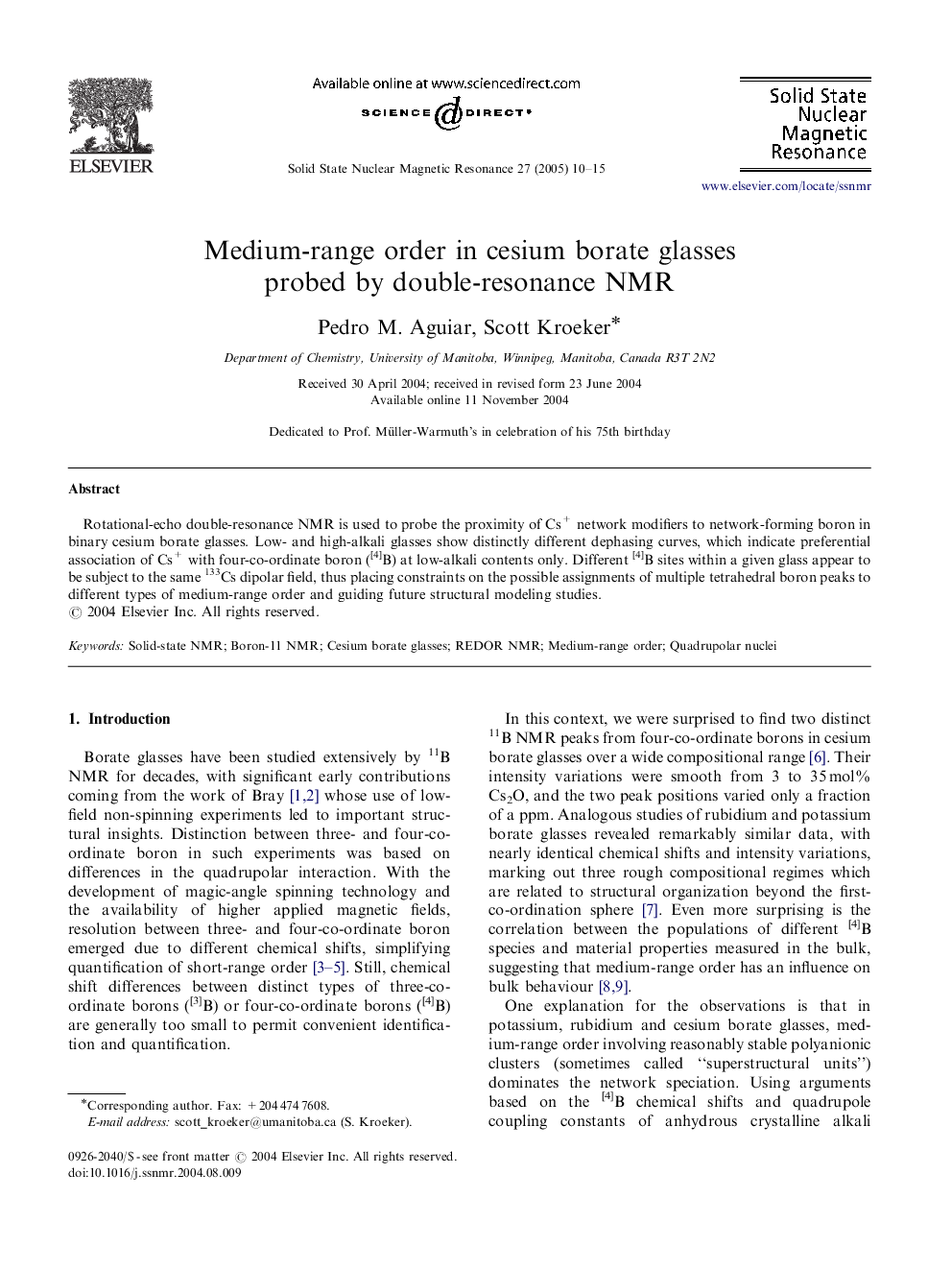| Article ID | Journal | Published Year | Pages | File Type |
|---|---|---|---|---|
| 9594223 | Solid State Nuclear Magnetic Resonance | 2005 | 6 Pages |
Abstract
Rotational-echo double-resonance NMR is used to probe the proximity of Cs+ network modifiers to network-forming boron in binary cesium borate glasses. Low- and high-alkali glasses show distinctly different dephasing curves, which indicate preferential association of Cs+ with four-co-ordinate boron ([4]B) at low-alkali contents only. Different [4]B sites within a given glass appear to be subject to the same 133Cs dipolar field, thus placing constraints on the possible assignments of multiple tetrahedral boron peaks to different types of medium-range order and guiding future structural modeling studies.
Related Topics
Physical Sciences and Engineering
Chemistry
Physical and Theoretical Chemistry
Authors
Pedro M. Aguiar, Scott Kroeker,
